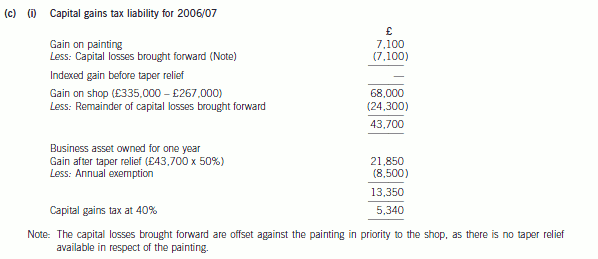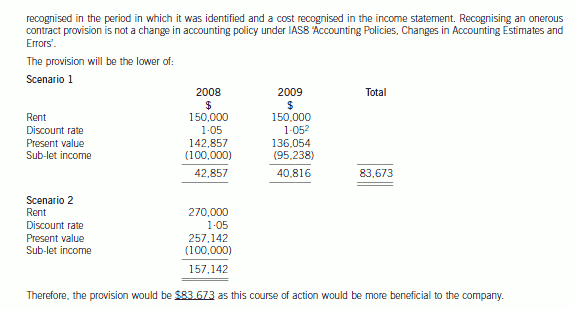ACCA全科合格证与专业阶段证书有什么不同?
发布时间:2020-02-29
由于ACCA考试费用较高,且考试难度较大,为了鼓励考生报考, ACCA官方会在考生在通过ACCA各阶段考试之后颁发相应的证书。而不少参加了ACCA考试的小伙伴,对ACCA考试证书以及各阶段的证书区别并不了解。下面,51题库考试学习网在下面为大家带来ACCA考试各阶段证书的相关信息,以供参考。
ACCA考试全科成绩合格后,获得的证书是ACCA准会员证书,是申请注册ACCA会员的前提。而各阶段通过考试后获得的证书,是独立的,并不是申请ACCA会员的条件。下面,为大家带来ACCA考试各阶段对应证书的获取方式。
首先是商业会计证书。当学员完成Knowledge部分——
Accounting in Business,Management Accounting,Financial
Accounting这三门考试,并通过基础阶段道德测试,就能够获得商业会计证书。注意,申请免试的小伙伴是无法获得此证书的。
其次是高级商业会计证书。当学员完成Skill部分——
LW,PM,TX,FR,AA,FM六门考试,并且完成道德测试模块,就能够获得高级商业会计证书。同样的,如果上述科目免试,也无法获得此证书。
然后是牛津布鲁克斯大学学士学位。考完ACCA前9门可申请英国牛津布鲁克斯大学应用会计学学士学位。准备申请学位的考生,需要提前提交英语成绩证明,以及一篇英文论文,通过后即可获得此学位。如果是免试,也是无法申请学位的。
接着是牛津布鲁克斯大学硕士学位。13门全部通过以后将有机会申请牛津布鲁克斯大学MBA硕士学位。在申请时,除了需要通过考试之外,还需要去英国学习答辩,论文答辩通过即可获得硕士学位。 硕士学位获取难度不低,因此有兴趣的小伙伴要提前做好准备。
最后是大多数考生的目标:ACCA会员证书。通过13门考试,即可获得ACCA准会员证书。在完成相应的要求,并累计三年工作经验,即可申请转为正式ACCA member。即ACCA会员。
以上就是关于ACCA考试合格证书的相关情况。51题库考试学习网提醒:ACCA考试各阶段对应的证书均需要全科通过,免试则会失去证书获取资格,请各位考生注意。最后,51题库考试学习网预祝准备参加2020年ACCA考试的小伙伴都能顺利通过。
下面小编为大家准备了 ACCA考试 的相关考题,供大家学习参考。
13 At 1 January 2005 a company had an allowance for receivables of $18,000
At 31 December 2005 the company’s trade receivables were $458,000.
It was decided:
(a) To write off debts totalling $28,000 as irrecoverable;
(b) To adjust the allowance for receivables to the equivalent of 5% of the remaining receivables based on past
experience.
What figure should appear in the company’s income statement for the total of debts written off as irrecoverable
and the movement in the allowance for receivables for the year ended 31 December 2005?
A $49,500
B $31,500
C $32,900
D $50,900
430,000 x 5% = 21,500 – 18,000 + 28,000
(c) (i) Compute Gloria’s capital gains tax liability for 2006/07 ignoring any claims or elections available to
reduce the liability. (3 marks)

(d) Wader has decided to close one of its overseas branches. A board meeting was held on 30 April 2007 when a
detailed formal plan was presented to the board. The plan was formalised and accepted at that meeting. Letters
were sent out to customers, suppliers and workers on 15 May 2007 and meetings were held prior to the year
end to determine the issues involved in the closure. The plan is to be implemented in June 2007. The company
wish to provide $8 million for the restructuring but are unsure as to whether this is permissible. Additionally there
was an issue raised at one of the meetings. The operations of the branch are to be moved to another country
from June 2007 but the operating lease on the present buildings of the branch is non-cancellable and runs for
another two years, until 31 May 2009. The annual rent of the buildings is $150,000 payable in arrears on
31 May and the lessor has offered to take a single payment of $270,000 on 31 May 2008 to settle the
outstanding amount owing and terminate the lease on that date. Wader has additionally obtained permission to
sublet the building at a rental of $100,000 per year, payable in advance on 1 June. The company needs advice
on how to treat the above under IAS37 ‘Provisions, Contingent Liabilities and Contingent Assets’. (7 marks)
Required:
Discuss the accounting treatments of the above items in the financial statements for the year ended 31 May
2007.
Note: a discount rate of 5% should be used where necessary. Candidates should show suitable calculations where
necessary.
(d) A provision under IAS37 ‘Provisions, Contingent Liabilities and Contingent assets’ can only be made in relation to the entity’s
restructuring plans where there is both a detailed formal plan in place and the plans have been announced to those affected.
The plan should identify areas of the business affected, the impact on employees and the likely cost of the restructuring and
the timescale for implementation. There should be a short timescale between communicating the plan and starting to
implement it. A provision should not be recognised until a plan is formalised.
A decision to restructure before the balance sheet date is not sufficient in itself for a provision to be recognised. A formal plan
should be announced prior to the balance sheet date. A constructive obligation should have arisen. It arises where there has
been a detailed formal plan and this has raised a valid expectation in the minds of those affected. The provision should only
include direct expenditure arising from the restructuring. Such amounts do not include costs associated with ongoing business
operations. Costs of retraining staff or relocating continuing staff or marketing or investment in new systems and distribution
networks, are excluded. It seems as though in this case a constructive obligation has arisen as there have been detailed formal
plans approved and communicated thus raising valid expectations. The provision can be allowed subject to the exclusion of
the costs outlined above.
Although executory contracts are outside IAS37, it is permissible to recognise a provision that is onerous. Onerous contracts
can result from restructuring plans or on a stand alone basis. A provision should be made for the best estimate of the excess
unavoidable costs under the onerous contract. This estimate should assess any likely level of future income from new sources.
Thus in this case, the rental income from sub-letting the building should be taken into account. The provision should be

4 You are a senior manager in Becker & Co, a firm of Chartered Certified Accountants offering audit and assurance
services mainly to large, privately owned companies. The firm has suffered from increased competition, due to two
new firms of accountants setting up in the same town. Several audit clients have moved to the new firms, leading to
loss of revenue, and an over staffed audit department. Bob McEnroe, one of the partners of Becker & Co, has asked
you to consider how the firm could react to this situation. Several possibilities have been raised for your consideration:
1. Murray Co, a manufacturer of electronic equipment, is one of Becker & Co’s audit clients. You are aware that the
company has recently designed a new product, which market research indicates is likely to be very successful.
The development of the product has been a huge drain on cash resources. The managing director of Murray Co
has written to the audit engagement partner to see if Becker & Co would be interested in making an investment
in the new product. It has been suggested that Becker & Co could provide finance for the completion of the
development and the marketing of the product. The finance would be in the form. of convertible debentures.
Alternatively, a joint venture company in which control is shared between Murray Co and Becker & Co could be
established to manufacture, market and distribute the new product.
2. Becker & Co is considering expanding the provision of non-audit services. Ingrid Sharapova, a senior manager in
Becker & Co, has suggested that the firm could offer a recruitment advisory service to clients, specialising in the
recruitment of finance professionals. Becker & Co would charge a fee for this service based on the salary of the
employee recruited. Ingrid Sharapova worked as a recruitment consultant for a year before deciding to train as
an accountant.
3. Several audit clients are experiencing staff shortages, and it has been suggested that temporary staff assignments
could be offered. It is envisaged that a number of audit managers or seniors could be seconded to clients for
periods not exceeding six months, after which time they would return to Becker & Co.
Required:
Identify and explain the ethical and practice management implications in respect of:
(a) A business arrangement with Murray Co. (7 marks)
4 Becker & Co
(a) Joint business arrangement
The business opportunity in respect of Murray Co could be lucrative if the market research is to be believed.
However, IFAC’s Code of Ethics for Professional Accountants states that a mutual business arrangement is likely to give rise
to self-interest and intimidation threats to independence and objectivity. The audit firm must be and be seen to be independent
of the audit client, which clearly cannot be the case if the audit firm and the client are seen to be working together for a
mutual financial gain.
In the scenario, two options are available. Firstly, Becker & Co could provide the audit client with finance to complete the
development and take the product to market. There is a general prohibition on audit firms providing finance to their audit
clients. This would create a clear financial self-interest threat as the audit firm would be receiving a return on investment from
their client. The Code states that if a firm makes a loan (or guarantees a loan) to a client, the self-interest threat created would
be so significant that no safeguard could reduce the threat to an acceptable level.
The provision of finance using convertible debentures raises a further ethical problem, because if the debentures are ultimately
converted to equity, the audit firm would then hold equity shares in their audit client. This is a severe financial self-interest,
which safeguards are unlikely to be able to reduce to an acceptable level.
The finance should not be advanced to Murray Co while the company remains an audit client of Becker & Co.
The second option is for a joint venture company to be established. This would be perceived as a significant mutual business
interest as Becker & Co and Murray Co would be investing together, sharing control and sharing a return on investment in
the form. of dividends. IFAC’s Code of Ethics states that unless the relationship between the two parties is clearly insignificant,
the financial interest is immaterial, and the audit firm is unable to exercise significant influence, then no safeguards could
reduce the threat to an acceptable level. In this case Becker & Co may not enter into the joint venture arrangement while
Murray Co is still an audit client.
The audit practice may consider that investing in the new electronic product is a commercial strategy that it wishes to pursue,
either through loan finance or using a joint venture arrangement. In this case the firm should resign as auditor with immediate
effect in order to eliminate any ethical problem with the business arrangement. The partners should carefully consider if the
potential return on investment will more than compensate for the lost audit fee from Murray Co.
The partners should also reflect on whether they want to diversify to such an extent – this investment is unlikely to be in an
area where any of the audit partners have much knowledge or expertise. A thorough commercial evaluation and business risk
analysis must be performed on the new product to ensure that it is a sound business decision for the firm to invest.
The audit partners should also consider how much time they would need to spend on this business development, if they
decided to resign as auditors and to go ahead with the investment. Such a new and important project could mean that they
take their focus off the key business i.e. the audit practice. They should consider if it would be better to spend their time trying
to compete effectively with the two new firms of accountants, trying to retain key clients, and to attract new accounting and
audit clients rather than diversify into something completely different.
声明:本文内容由互联网用户自发贡献自行上传,本网站不拥有所有权,未作人工编辑处理,也不承担相关法律责任。如果您发现有涉嫌版权的内容,欢迎发送邮件至:contact@51tk.com 进行举报,并提供相关证据,工作人员会在5个工作日内联系你,一经查实,本站将立刻删除涉嫌侵权内容。
- 2020-02-29
- 2019-07-20
- 2019-07-20
- 2020-01-08
- 2020-01-08
- 2019-07-20
- 2020-01-08
- 2020-01-08
- 2020-02-29
- 2020-01-08
- 2020-02-29
- 2020-01-08
- 2021-02-25
- 2020-01-08
- 2020-02-29
- 2019-07-20
- 2020-01-08
- 2019-07-20
- 2020-01-03
- 2019-07-20
- 2019-07-20
- 2020-01-08
- 2019-07-20
- 2020-01-08
- 2020-01-08
- 2019-07-20
- 2020-02-29
- 2020-01-08
- 2020-01-08
- 2019-07-20